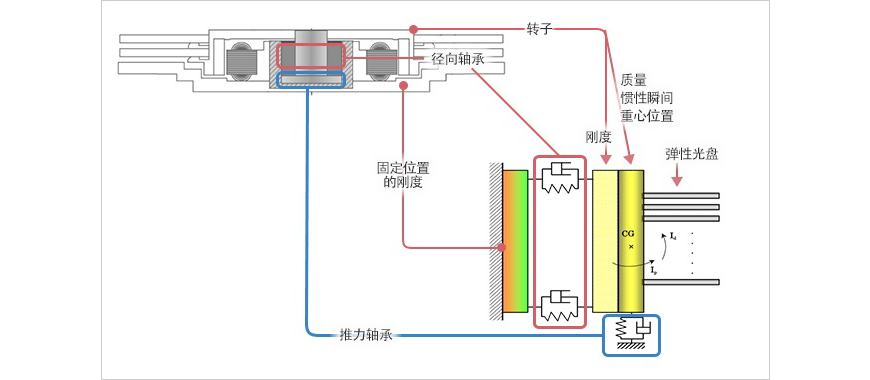NIDEC's Technical Capabilities
CAE Technology Developed In-House
Nidec's Original Design Optimization Tools for Fluid Dynamic Bearings
At Nidec, we take advantage of the computational power of supercomputers to analyze air flow when designing our fan and blower modules. Furthermore, our motors that make use of fluid dynamic bearings are designed with the help of analysis software developed in-house.
When we started laying the foundation of our CAE technology in the 1990s, supercomputers were incredibly expensive. Nevertheless, taking the first steps towards computer-aided engineering was crucial in the search for optimal designs for our new fluid dynamic bearings.
Nidec started mass producing HDD spindle motors with fluid dynamic bearings in 1994, and around the year of 2000 we began to significantly expand our lineup and production volumes. As the number of models using fluid dynamic bearings increased, our original design approach—using prototypes to develop the initial design, performing tests and then repeatedly fine-tuning the design—became impractical. With production volumes dramatically increasing, from tens to hundreds of thousands to millions of units per month, quality control managed on the order of ppm turned into a necessity, and our days of relying on a limited number of prototypes to detect faulty designs were over.
Reliable detection of outliers not following the normal distribution would require over a thousand prototypes and be highly prohibitive from a cost and delivery time perspective. Thus, in order to find an alternative solution, we embarked on the project of developing a method—using CAE technology—that would allow each of our design engineers to analyze product designs at their desks.

At the time, commercially available analysis software tools were too slow for our purpose, making it necessary to develop new software in-house. In order to make the best of the limited computational power at hand, we designed a specialized system bringing together all the functions necessary for analyzing our fluid dynamic bearings. By redefining 3D models in two dimensions and quantizing vibration data to a number of discrete predefined patterns, we managed to create an effective simulation tool narrowed down to include only phenomena relevant to the design evaluation process.
Fluid dynamic bearings are lined on the inside with herringbone-shaped grooves that generate dynamic pressure in oil as the shaft inside the bearing rotates. When analyzing the vibration that occurs during rotation, the coil and dampers inside the bearings are isolated and used as a simplified representation of the shaft and the bearing—making it easier to calculate rigidity and attenuation. As a result of these optimization measures, as many as 1000–2000 design permutations can be analyzed in only 30–60 minutes.
In this way, we are able to quickly calculate several thousand patterns, allowing us to detect and avoid defective designs on a scale that would not have been possible with physical prototypes.

Nidec's analysis software development team belongs to the same division as our design team. The two teams work closely together on a daily basis to develop new versions of existing software tools as well as entirely new tools. Particularly difficult projects that are beyond the capabilities of our software development team, alone, can be handled through cooperation with our new state-of-the-art research and development center in Kawasaki, Japan.
Recently, we have expanded the use of our fluid dynamic bearings to include fan motors as well. The design of cooling fans requires the use of flow analysis, including analysis of the behavior of air flow and the heat distribution inside the housing of the equipment cooled by the fan. For these cases, we make use of supercomputers to generate advanced models and perform large-scale calculations.
In addition to our component-design related know-how, Nidec's design capabilities now include modules/units as well as structural optimization of the very end-products in which our modules and units are installed. Backed by our original CAE technology accumulated over the years, we endeavor to transcend just being your supplier and instead become your partner.

